Embodied Intelligence: The Dawn of Practical Applications in 2025
![]() 08/12 2025
08/12 2025
![]() 457
457
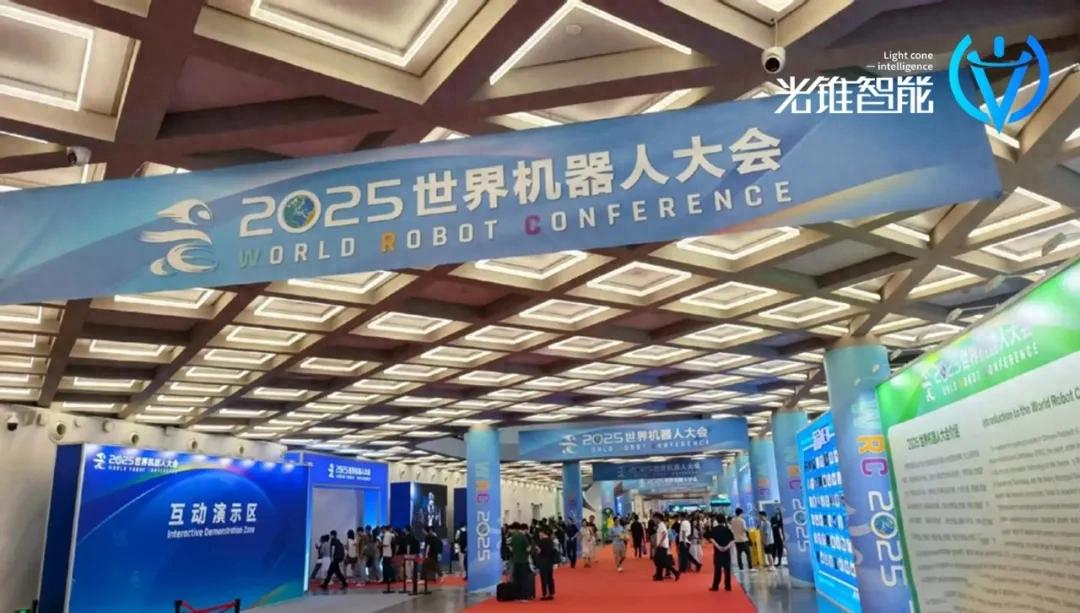
The joys and sorrows of 'old' and 'new' robots remain distinct, with little overlap.
While the new generation of robots engages in humanoid combat and dog-walking, traditional robot companies continue to use robotic arms for handling goods. One sector thrives, while the other languishes.
On August 9, another World Robot Conference (WRC) opened in Beijing. As the largest exhibition to date, it attracted over 200 domestic and international robot companies, with more than 50 focusing on humanoid robots. Over 1,500 exhibits and over 100 new products were showcased, filling the halls with innovative displays.
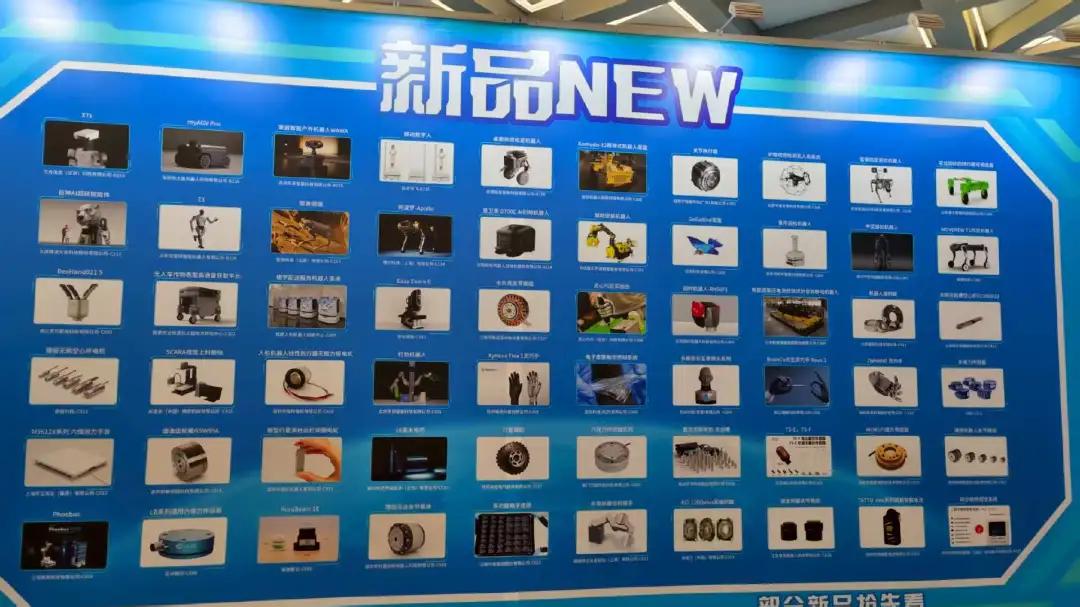
'Large models have addressed the issue of robot operation, enabling robots to work and truly interact with the physical world.'
Hu Luhui, founder and CEO of Zhicheng AI, summarized the evolution of robots over the past year for Guangzhui Intelligence.
Braving the heavy rain and crowded streets of Beijing that day, Guangzhui Intelligence observed three key trends at the conference.
Firstly, humanoid robots were the undisputed stars of this year's conference. Previously, Hall A primarily showcased industrial robot applications. This year, the organizers specifically arranged for Unitree and Accelerated Evolution, two humanoid robot manufacturers, to 'draw the crowds.' Hall B, dedicated to new technologies, was entirely occupied by humanoid robots. Booths without humanoid robots noticeably had a 'sparse' audience.
Secondly, this year's humanoid robot demonstrations focused on 'interactivity.' At last year's robot exhibition, many robots were still 'behind barriers.' This year, robot manufacturers hoped consumers would 'touch' the robots. In the areas for small humanoid robots, robotic dogs, and robotic toys, Guangzhui Intelligence observed many consumers inquiring about prices and wanting to place orders on the spot.
Lastly, this year, most robot manufacturers showcased practical value in their demonstrations. Robots have achieved preliminary exploration in scenarios such as factories, scientific research and education, medical care, and elderly care.
The most grounded scenario was street vending. Various robot coffee stalls were ubiquitous at the conference venue, alongside scenarios like robot bars, robot jianbing (Chinese savory pancake) stands, and robot retail stores.
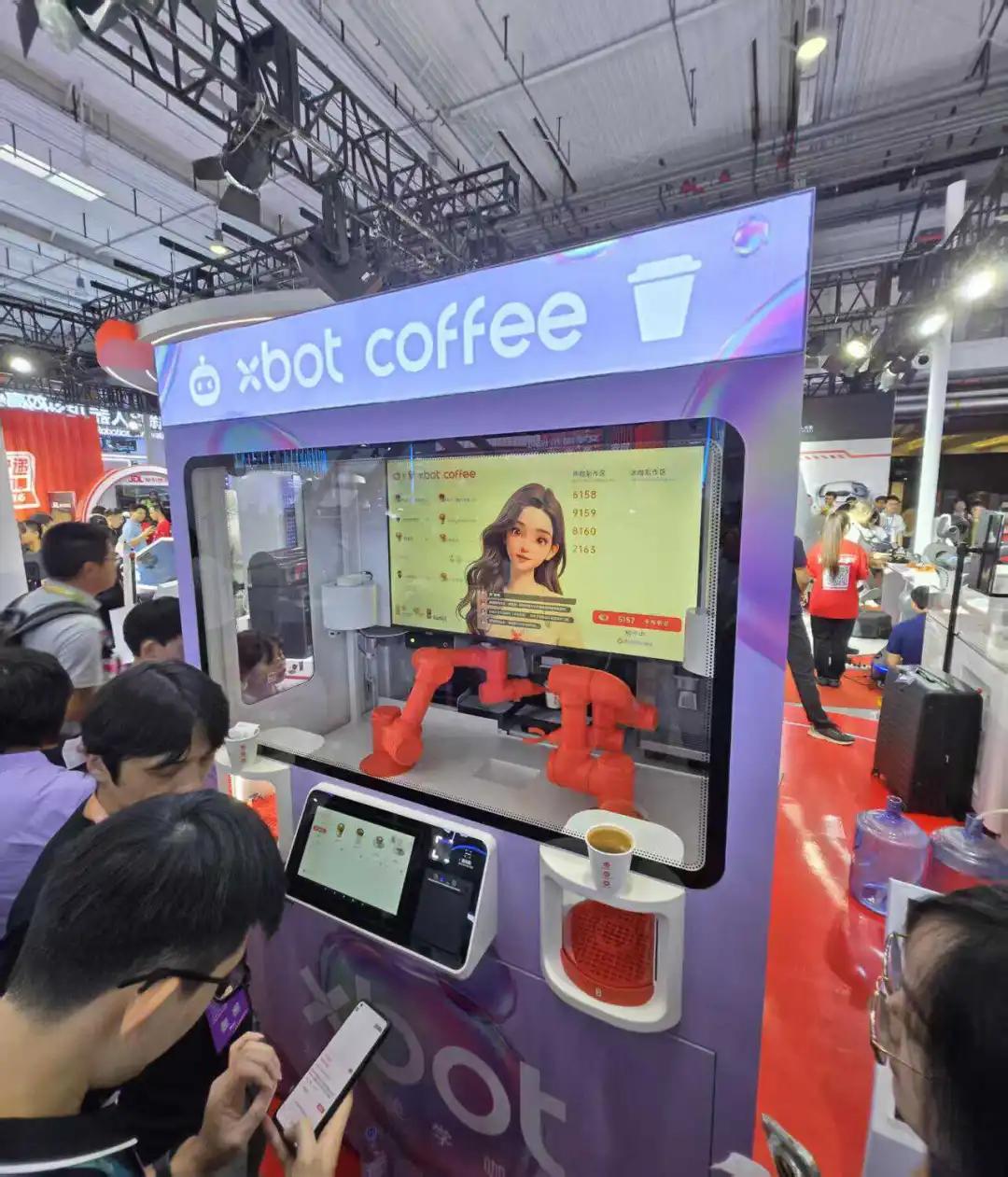
In industrial scenarios, pioneering robot manufacturers began to emphasize the concept of collaborative clusters. Compared to last year's modest 'able to work' label, this year's robots emphasized more practical data indicators such as integration with automated production lines, battery life, continuous working hours, and return periods.
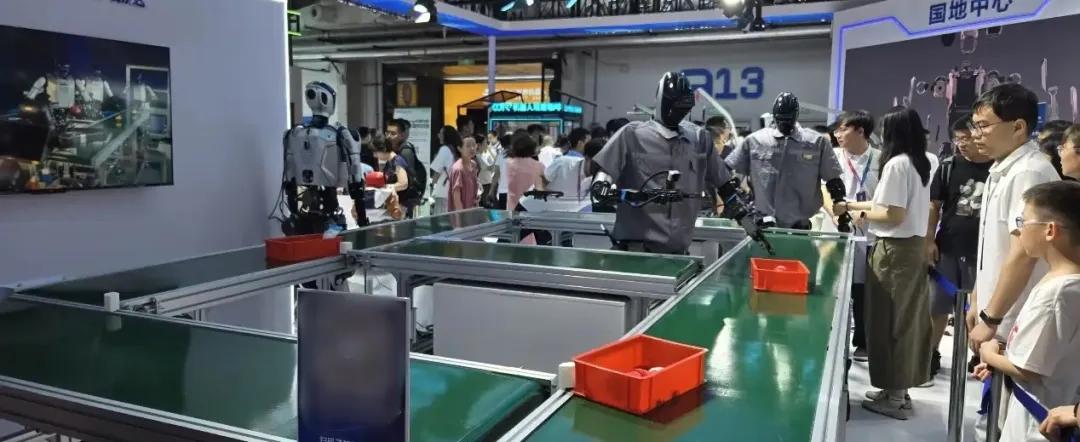
Practical implementations have propelled robots into mass production. When Guangzhui Intelligence inquired about mass production, many robot manufacturers proudly stated they had shipped hundreds of units this year. Robots have begun to infiltrate our daily lives.
'We will collaborate with online store merchants to implement 100 locations this year. After consumers place orders online, robots will sort goods and hand them over to riders for delivery,' Fu Qiang, partner of Galaxy General Robotics, told Guangzhui Intelligence.
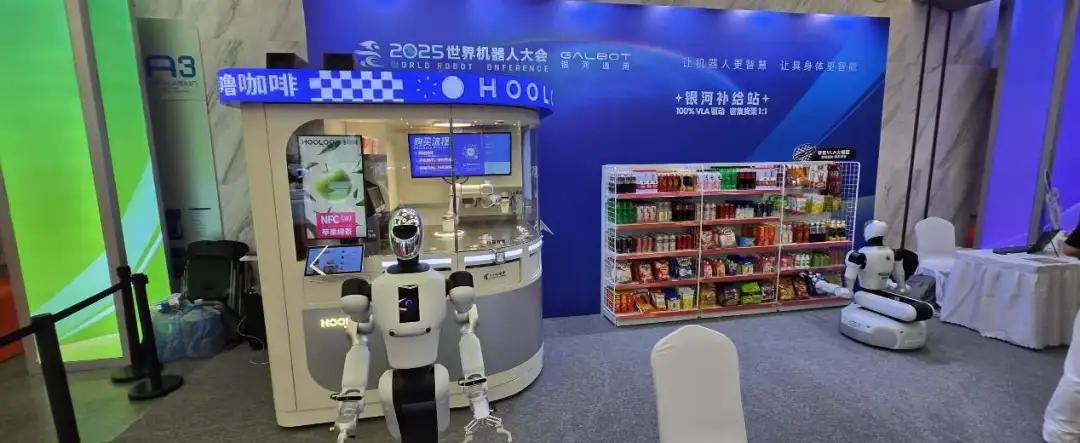
At the conference venue, Guangzhui Intelligence also noticed executives from Samsung and several Japanese companies 'observing' everywhere. This indicates that China's humanoid robots will have the same overseas opportunities as other robots.
Changes in the robot industry are a clear signal.
In an industry driven by technological innovation, the closer it gets to large-scale applications, the faster the iteration speed of technologies and products. This is based on early-stage accumulation and also the result of consumer consensus driving the convergence of the Bass model (innovation diffusion theory).
During this exploration, Guangzhui Intelligence also contacted executives from key companies such as Galaxy General, UBTECH, Zhicheng AI, Zhongqing Robotics, and Magic Atom to comprehensively discuss the present and future of the robot industry.
'Many robots couldn't move last year, but they can move this year and perform specific tasks,' Fu Qiang summarized the changes over the past year for Guangzhui Intelligence. Walking through the booths of various companies, Guangzhui Intelligence noticed fewer 'empty' robot demonstrations this year and more demonstrations combined with actual commercial scenarios.
The on-site robot demonstration scenarios can be roughly divided into four categories, each closely revolving around the theme of commercialization.
The most eye-catching for the audience was showcasing the robots' movement capabilities.
Compared to previous years' 'small-scale + fixed time and location' robot demonstrations, this year's robots from various manufacturers barely stopped. Players with advanced motion technology were all 'making a scene,' with Unitree performing robot combat, Accelerated Evolution playing robot soccer, and Zhongqing and Magic Atom holding robot runway shows. The crowds were thick, making it hard to squeeze in. Some manufacturers even put their robots directly on treadmills.
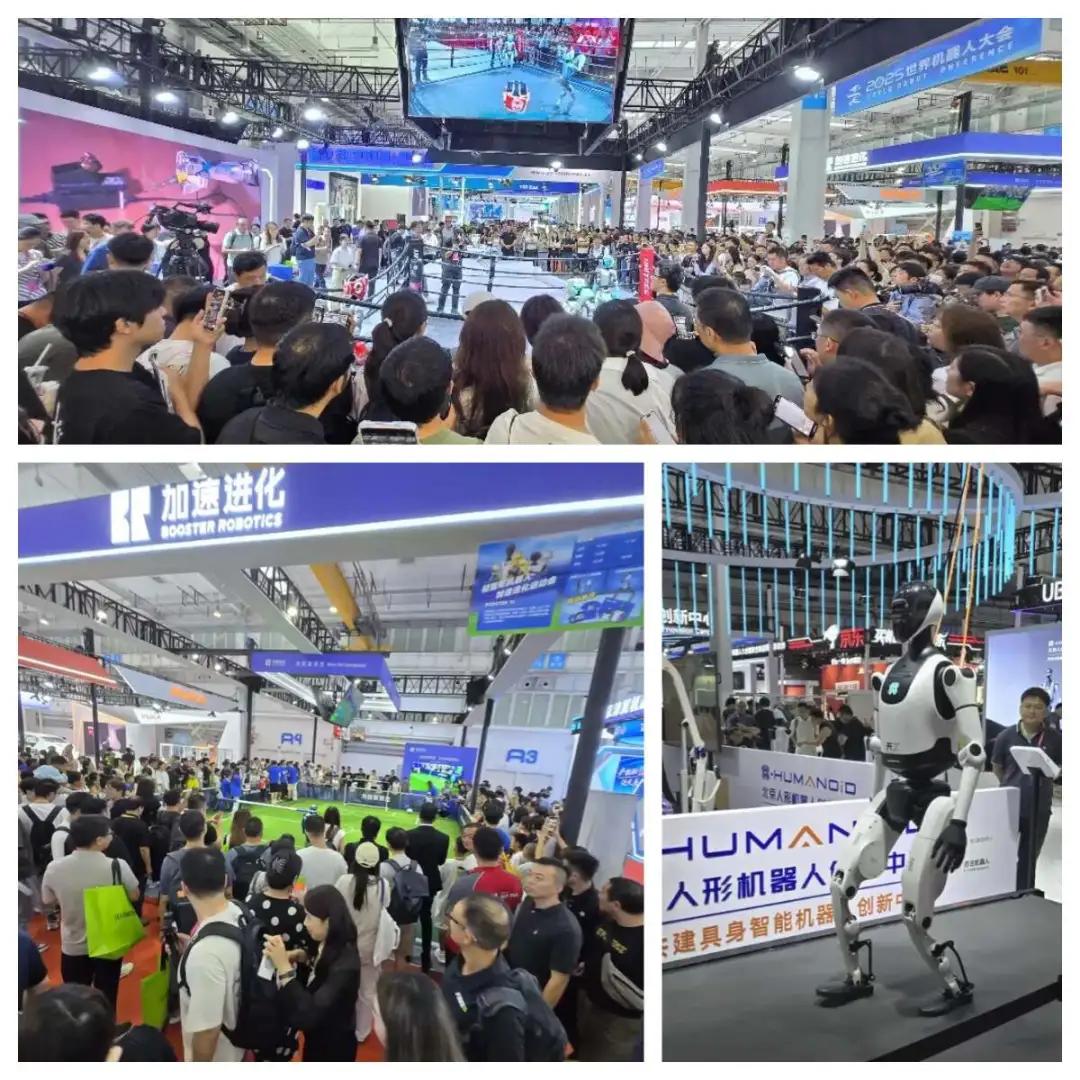
There were also some players at the conference with relatively weaker motion capabilities. These robots' display modes were similar to last year, simply showcasing appearance and dialogue capabilities. Even weaker ones were simply dressed up in clothes, with the internal workings remaining a mystery.
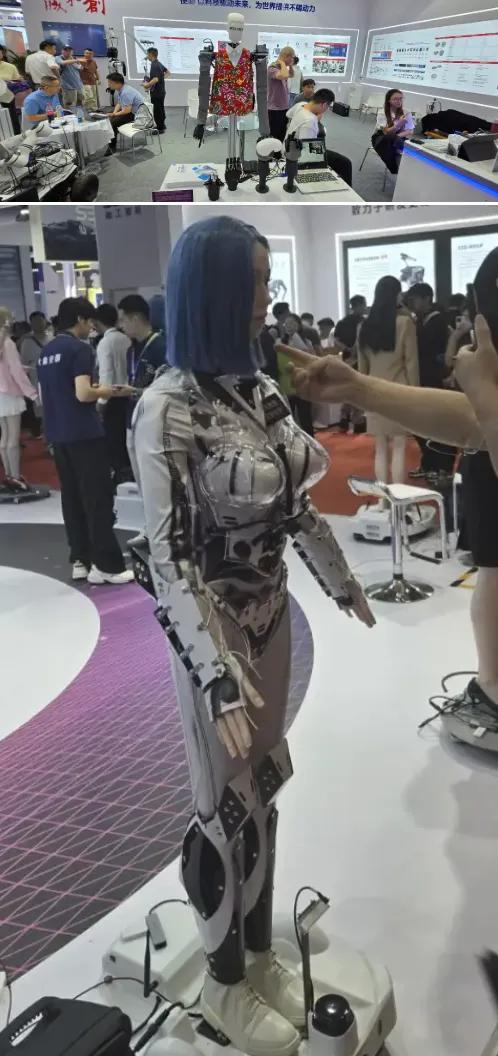
Wherever there was a robot motion demonstration booth, there was an audience gathering. And the gathering itself could generate commercial value. 'The price of one robot is in the low hundreds of thousands, and current customers include Hongqi Automobile, which uses them for exhibitions and reception,' staff at the Leju Robotics booth explained to Guangzhui Intelligence the commercial value that robot demonstrations can bring.
And the best implementation of robots at this stage was the ubiquitous retail robot.
The most frequent occurrences were coffee-selling and shelf-scenario robots, both of which have fully achieved automated operation capabilities. In the coffee-selling demonstration, customers scanned the code to place an order, and the robot automatically completed it, similar to purchasing coffee at an offline coffee shop. In the shelf retail scenario, the robot sorted and picked up goods based on the audience's choices.
Additionally, there were also retail scenarios on-site for making jianbing, automatic cocktail mixing, etc., which can basically be considered variants of 'selling coffee,' all providing customers with a full-process task from scanning the code to receiving the order.

It is worth noting that this year's retail robots have begun to focus on the details of actual commercial implementations.
For example, the jianbing robot displayed all states of the jianbing, giving consumers peace of mind when purchasing. Additionally, shelf robots did not blindly adopt bipedal movement solutions, primarily designed to ensure stable operation and consider battery life.
Fu Qiang told Guangzhui Intelligence, 'The advantage of wheels is that the technology is relatively mature. A robot equipped with a 1.5 kWh battery can support continuous operation for 8 hours.'
Opposite to retail scenarios were the applications of humanoid robots in industrial scenarios.
Compared to last year's demonstrations of a single robot performing fixed tasks, this year's robots began to emphasize the concept of 'collaborative clusters.' At this year's conference, although the robot work content was still the previous 'trio' of sorting, handling, and quality inspection, there was a concept of mutual cooperation in the workflow.
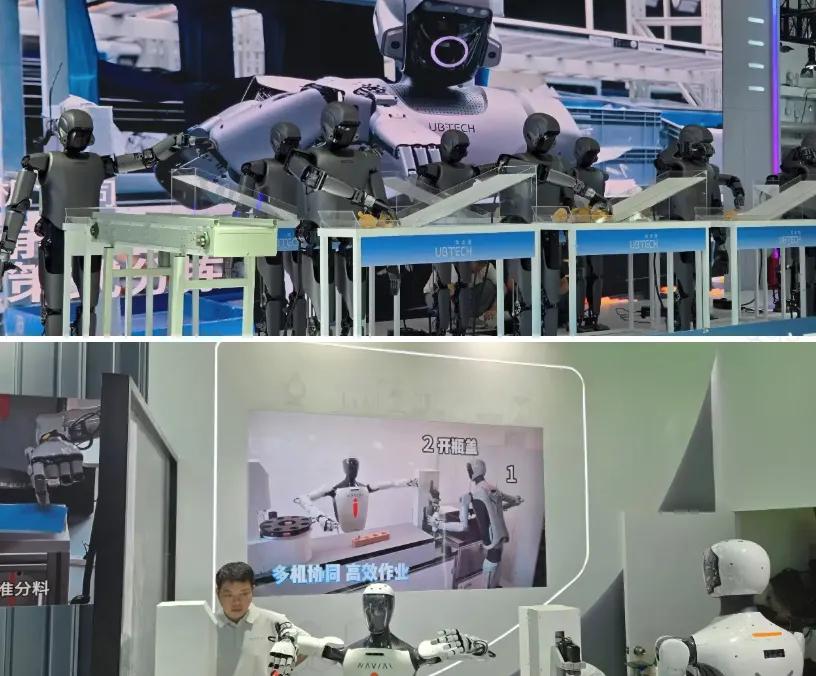
'Industrial scenarios must move towards collaborative operations; it doesn't make sense to deploy one or two robots in a single scenario,' Jiao Jichao, vice president and dean of the research institute at UBTECH, told Guangzhui Intelligence. Collaborative clusters of robots represent the integration of humanoid robots into modern industrial production systems. In this process, robot companies can also transform the challenges encountered in applications into technical barriers. 'Achieving collaborative clusters requires robot companies to spend time delving into customer production processes, communicating with customers, and interfacing with customers' industrial backend management systems. Without actual implementation, this coordination is hard to imagine,' said Jiao Jichao.
The last category was the industry's re-enactment of the price competition segment.
Last year, some exhibitors were still 'tight-lipped' about prices, but this year they were much more confident. Although the cost of buying a humanoid robot for retail or industrial use is still high, most booth staff would clearly state whether the price was in the hundreds of thousands or close to a million. Overall, this year's robot prices were much more reasonable. Taking guide and performance-type robots as an example, a cost of 70-80,000 yuan is roughly equivalent to a person's annual salary.
On the other hand, humanoid robots have reignited the price war. Last year, Zhongqing played the role of a 'price slayer,' and this year's new products chose to 'increase quantity without increasing price.' Last year, 38,500 yuan could buy a product with only a 'lower body,' while this year's new product is a complete humanoid posture.
Ren Guowen, co-founder of Zhongqing Robotics, told Guangzhui Intelligence the secret to 'cutting prices again.' 'The company's full-stack self-research capabilities allow it to balance performance and price.'
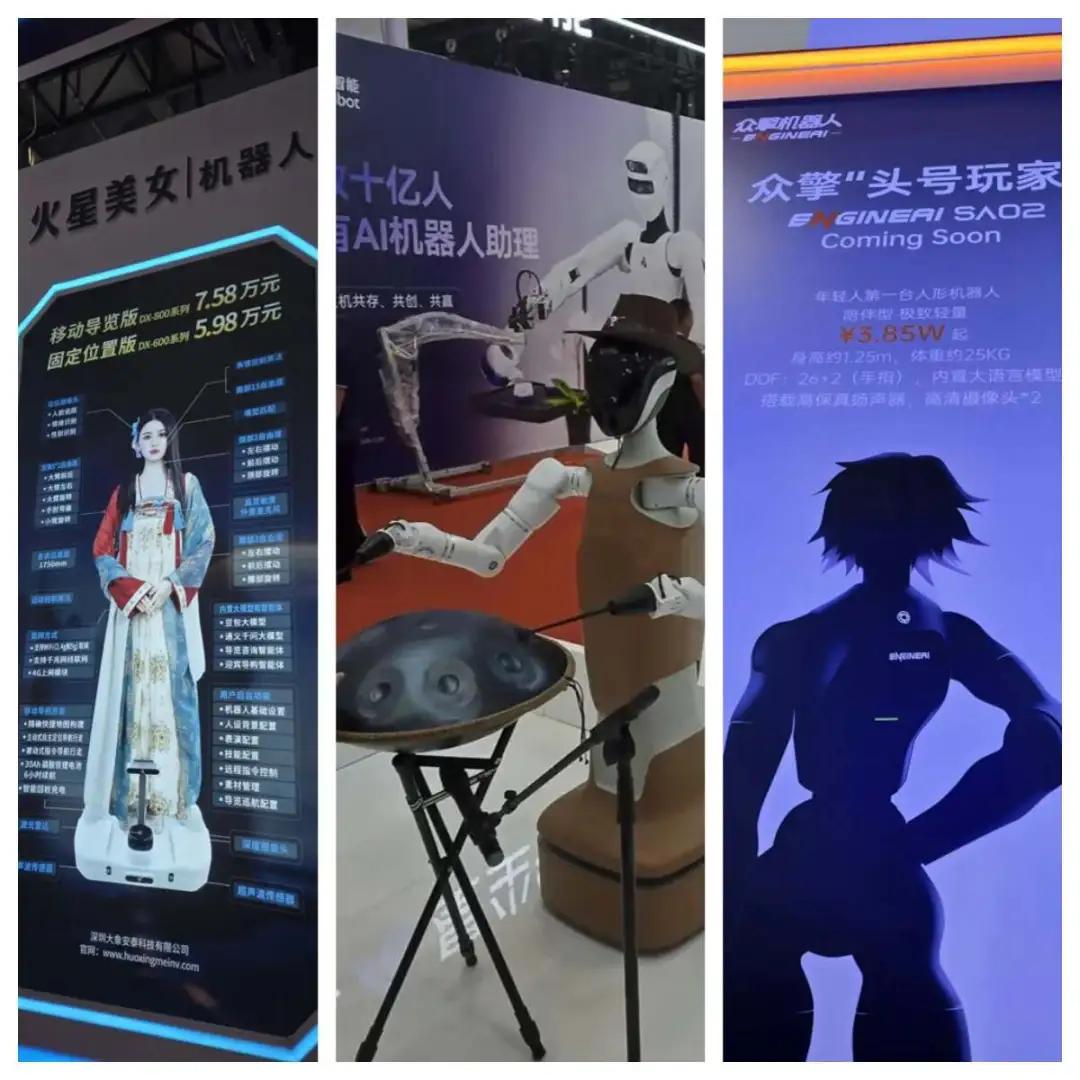
In 2025, robots truly 'can work and earn money.' From the strong commercialization atmosphere this year, we can clearly feel that the robot industry has undergone a significant transformation in just one year.
Why have humanoid robots been able to advance from demonstration to practical use in just one year?
'It's mainly due to the improvement of large model capabilities. The biggest difference between this generation of robot technology and the previous one is that the 'brain has evolved,'' said Fu Qiang.
This is also the consensus among many robot manufacturers.
The key VLA model can be understood as adding a layer of generalizable and predictable explanation of the real world using L (language) to the previously traditional VA model.
'The generalization ability of VLA can directly output a model-generated action in real-time through visual input, which is the biggest difference from previous programming techniques,' Fu Qiang summarized.
For example, Zhiyuan's GO-1 large model can be seen as adding a layer of CoT (chain of thought), which is similar to the core design architecture of companies such as Figure and Xinghai Map that focus on 'fast and slow dual systems.' Some companies also believe that there is a world large model above VLA. Hu Luhui told Guangzhui Intelligence, 'The scaling law of VLA has encountered a bottleneck, and the world model is the future.'
We can see from Xinghai Map's household robot: on the left side of the screen is the human instruction 'make the bed.' On the right side of the screen is the current command 'return to the initial position' real-time disassembled and generated by the language large model.
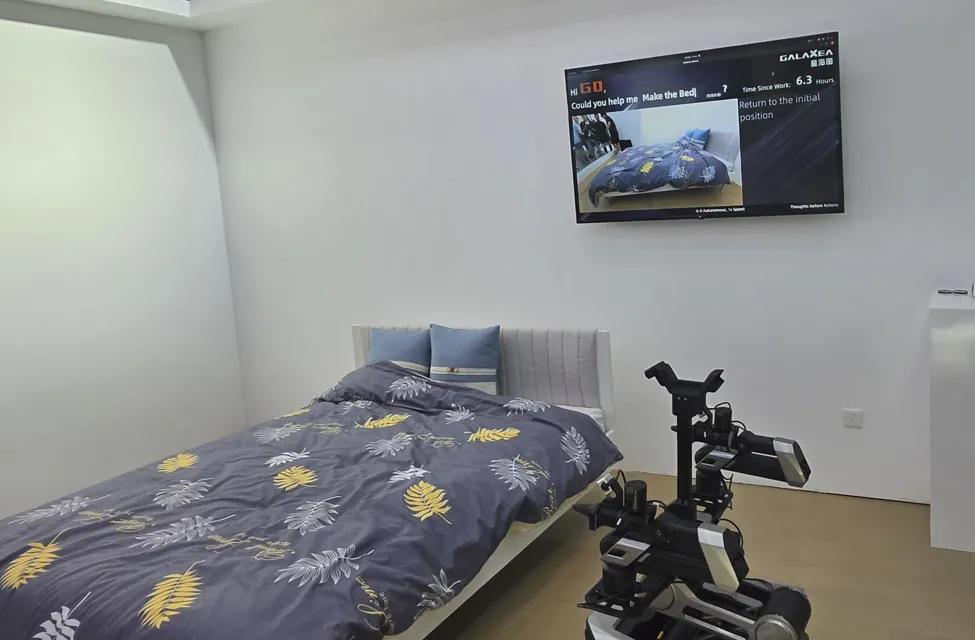
The basic core technology routes are consistent, leading all manufacturers to choose to make their robots as humanoid as possible, even if these demonstrations and implementation scenarios have 'nothing to do' with the humanoid appearance.
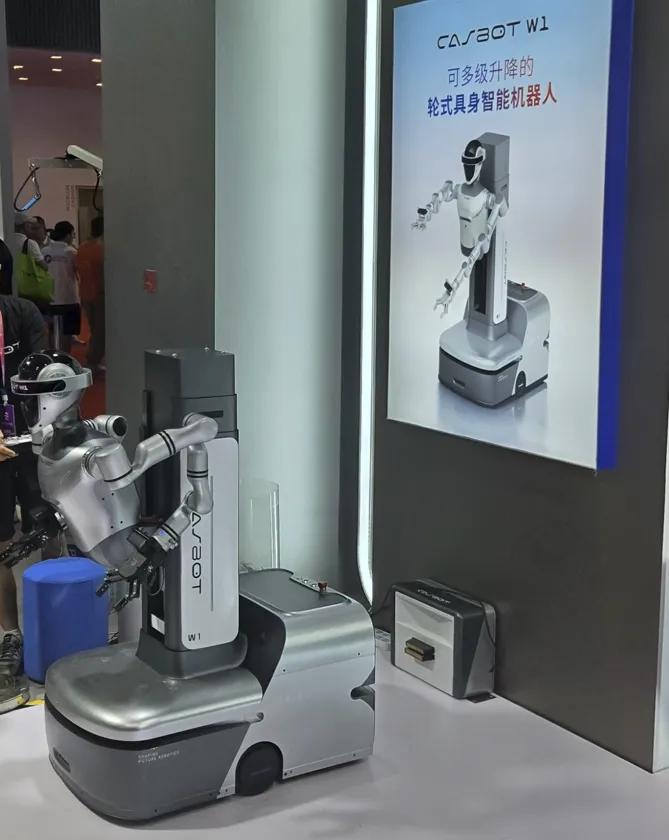
The humanoid appearance offers two clear advantages for AI training.
The first is that robot training data can be maximally reused as hardware upgrades. 'Some companies still cannot achieve bipedal movement, and designing a humanoid body for the robot is to support subsequent generalization training,' Tian Gang, sales director of Magic Atom, explained to Guangzhui Intelligence.
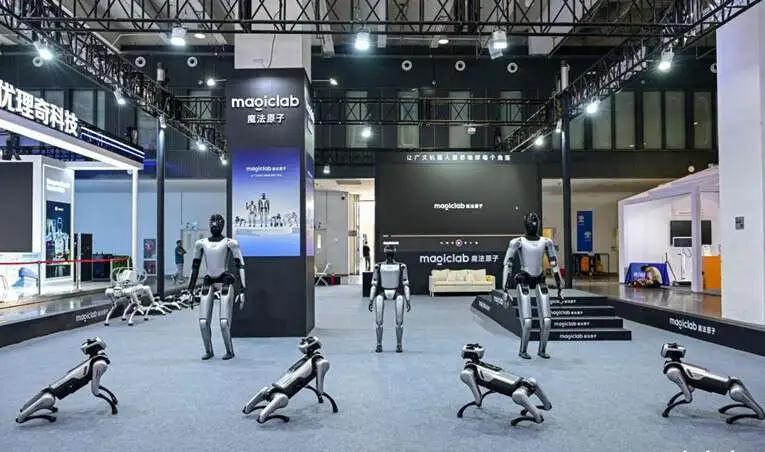
The second advantage is that a unified large model can significantly reduce the technology development cycle for robot manufacturers. At the Zhongqing booth, a staff member revealed to Guangzhui Intelligence that the lower body of the Meiluo robot recently demonstrated by Midea was based on Zhongqing's SA01. In less than a year, Midea, with a traditional manufacturing background, has fully mastered all the motion capabilities of humanoid robots. A large model brain combined with combinable body accessories practically turns robots into 'Transformers.'

Under the training of large models, this year's robot movements have also become smoother. Although robots this year occasionally stumbled or didn't hold things steadily, Guangzhui Intelligence noticed that these robots' movements were already very close to humans. Taking Xingchen Intelligence as an example, in the sorting scenario, the coordination of the robot's hands, eyes, and torso is exactly the same as a human 'using chopsticks to pick up peanuts.'
Thanks to the extensive generalization capabilities of large models, robots from manufacturers with pioneering VLA technology can now grasp the real world with greater precision.
Taking the example of shelf retail scenarios, the more diverse the range of goods a robot can handle, the more robust its "brain" becomes. For instance, JD.com's scenario predominantly involves beverages, limiting the types of items the robot encounters. In contrast, Lingjing Qiyuan's shelves host a variety of items such as canned potato chips, melon seeds, and paper box packaging, all with relatively hard outer layers. Meanwhile, Galaxy General's shelves present an even more complex scenario, including inflated packaging for potato chips, small breads, instant noodles, peanuts, biscuits, spicy strips, and beer—a complexity comparable to a large supermarket's snack section.
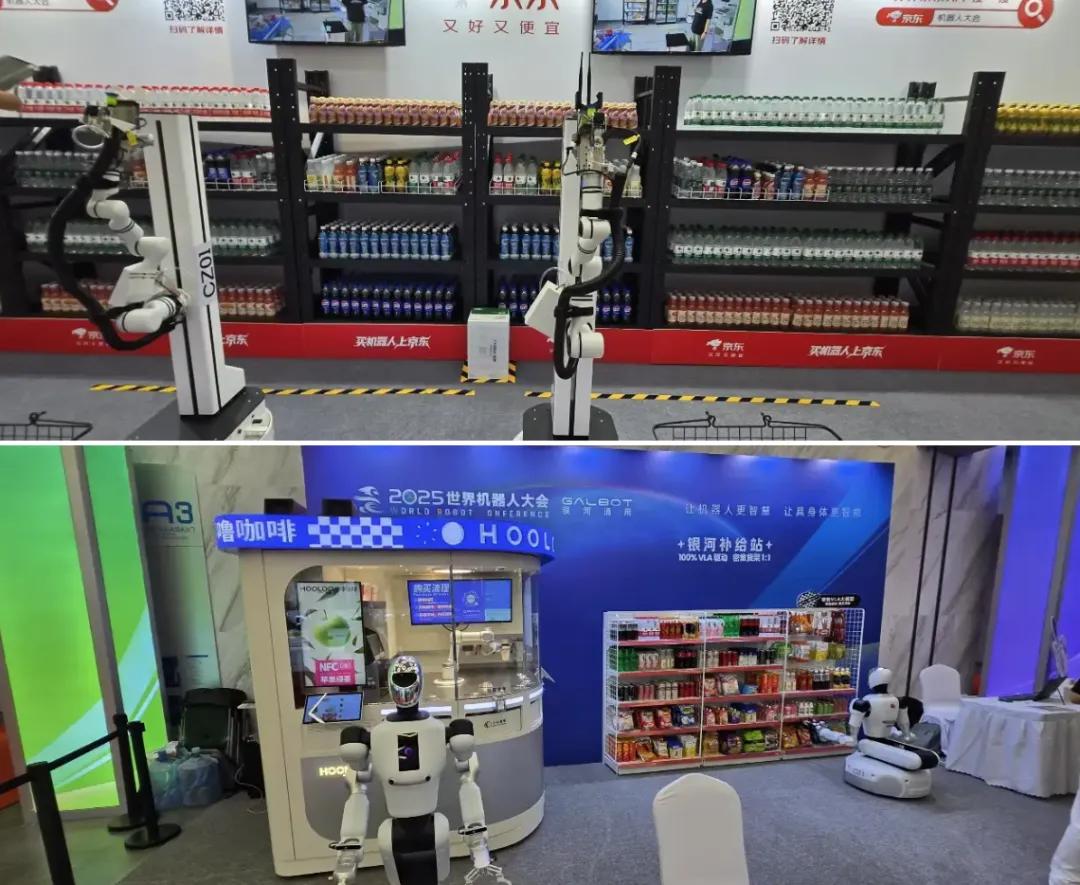
"We've generated tens of billions of training data through simulation methods, ensuring that no matter what's placed, it can be accurately identified," explained Fu Qiang. Yinhe Universal Robot, leveraging extensive data accumulation and VLA large model training, has achieved remarkable generalization and understanding capabilities.
However, some robot manufacturers advocate for a realistic perspective on the limitations of VLA technology.
Jiao Jichao shared with Guangzhui Intelligence that real-world scenario data should be prioritized when training robot intelligence. "VLA might be more suitable for the verification and exploration stages. Many manufacturers use simulation-generated data, which lacks the randomness of real-world scenarios," he noted.
Despite this, all robot manufacturers have agreed on the importance of software in the current era, catalyzed by the integration of large models into robot implementations.
Ren Guowen acknowledged to Guangzhui Intelligence, "Initially, we (Zhongqing) focused more on hardware and motion control. Now, we've invested significantly more in embodied capabilities. Currently, our R&D investment in software algorithms far exceeds that in hardware."
"The key lies in technological breakthroughs to create robots with genuine commercialization potential," said Hu Luhui, emphasizing that the robot industry stands on the cusp of large-scale commercialization.
"Capital markets are currently calm, but the reshuffling stage is imminent. Manufacturers that fail to quickly implement may face challenges," warned Jiao Jichao, pouring cold water on the industry's excitement about the commercialization competition of humanoid robots.
Conversely, Fu Qiang believes that leading commercialized robot companies will establish high barriers, leading to a "winner-takes-all" scenario. "The strong will undoubtedly remain strong, while latecomers may miss their chance," he emphasized.
Both UBTECH and Yinhe Universal view commercialization as crucial for the survival of robot companies, shifting focus beyond mere technology.
At the exhibition, Guangzhui Intelligence observed a notable difference among companies at varying stages of commercialization.
For instance, in industrial scenarios, some robot manufacturers prioritize metrics such as continuous working hours, charging or battery swapping, and efficiency gaps compared to human workers. Others still discuss relatively basic indicators like load-bearing capacity, degrees of freedom, and motion coordination, which might not be of paramount concern to industrial users.
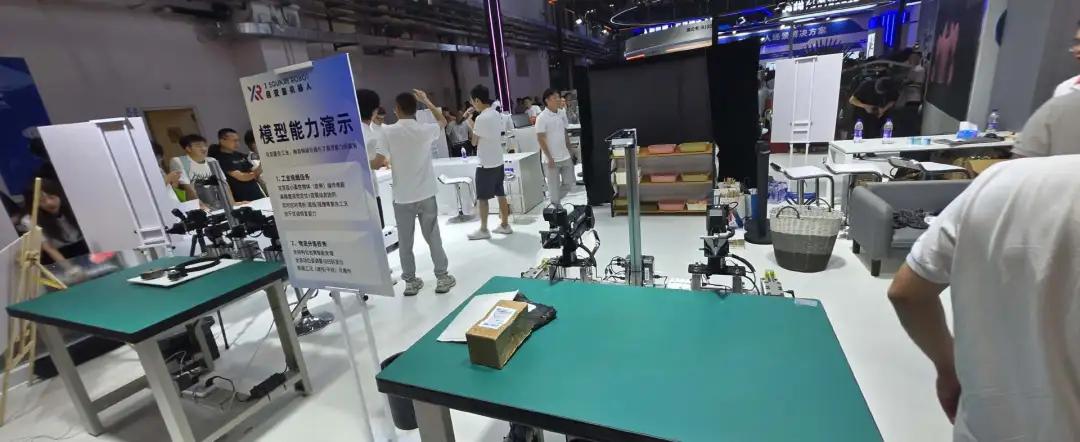
Jiao Jichao informed Guangzhui Intelligence that industrial scenario customers have direct demands. "Customers first inquire about functionality and then about battery life," he explained.
For robot companies, real-world applications facilitate genuine product iterations. Many hardware design flaws only become apparent through actual factory operations. For example, one iteration of UBTECH Walker S2 allowed the robot's hand to touch the ground directly, addressing the limitation of the previous generation that could only move boxes at a fixed height and couldn't pick them up from the ground.
In retail scenarios, robot companies leading in commercialization have surged ahead.
"Robots have become standard products. A robot can start working in an online store within a day, without even needing to scan products in advance," said Fu Qiang. Thanks to their ultra-high deployment efficiency, Yinhe Universal's retail robots are rapidly expanding their market reach.
The smooth implementation of robots in retail scenarios is due to the straightforward cost-benefit analysis. Fu Qiang explained that the O2O business logic necessitates 24-hour order taking and operations, requiring 2-3 staff on shifts. Robots reduce management costs. Taking Beijing as an example, an employee earns around seven to eight thousand yuan, with corresponding personnel expenses of around ten thousand yuan. Three employees amount to three hundred thousand yuan per year, totaling six hundred thousand yuan in two years. Purchasing robots in bulk falls within this cost range.
"The priority is to let robots solve problems and genuinely enhance productivity," concluded Hu Luhui.
At the conference's conclusion, Guangzhui Intelligence posed a pointed question to each company: Will the widespread use of humanoid robots affect ordinary workers' employment opportunities?
Jiao Jichao admitted, "In fact, it addresses the problem of recruitment difficulties."
Indeed, traditional industries like manufacturing, clothing, and 3C electronics require substantial manpower for assembly work but often face recruitment challenges and high turnover rates. The labor shortage reflects humans' aversion to boring and repetitive tasks, for which robots have long been heralded as the solution. The era of humanoid robots has indeed arrived.








